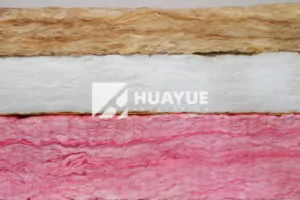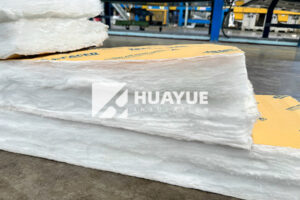What Are the Main Applications and Thermal Conductivity Features of Glass Wool?
Glass wool helps keep buildings warm, safe, and quiet. Its unique fiber structure traps heat and reduces noise, but knowing its properties and uses is key to unlocking its full value.
Glass wool is widely used for structural, pipe, and acoustic insulation because its thermal conductivity is low—usually between 0.023 and 0.040 W/m·K. Glass wool’s performance works by trapping still air and resisting heat transfer.
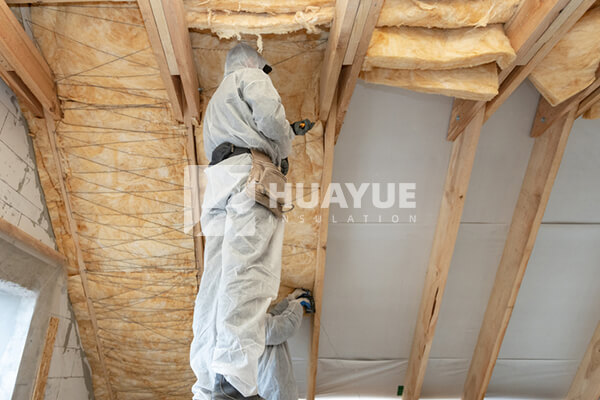
When I first joined the thermal insulation industry in 1998, the word “innovation” was often just a slogan, not action. Even then, I saw that glass wool set itself apart—not just for energy saving, but for the range of places it could be used. From large commercial roofs to quiet home offices, I’ve lived through its evolution and seen how its properties connect directly to real-world performance.
How Is Glass Wool Made and Why Does Its Structure Matter?
Glass wool is made by turning molten glass into fibers, then binding them in a dense, wool-like mat. The strength of its structure shapes all its performance features.
By spinning glass at high speeds—imagine how cotton candy is made—tiny fibers trap drifting air. When these are formed into mats, rolls, or slabs, they create millions of microscopic gas pockets. This makes for a material that stays light, flexible, and good at stopping heat and sound.
| Manufacturing Step | Purpose | Outcome |
|---|---|---|
| Melt glass at high temps | Create base material | Molten borosilicate glass |
| Spin into tiny fibers | Increase surface area, trap air | Fine glass fibers |
| Add binder, shape into mats | Lock fibers in place | Rolls, slabs, or batts |
| Customize by need | Meet different project demands | Loose-fill, coated, or sprayed |
This process leads to the flexible insulation you see in walls, floors, industrial tanks, and soundproofed rooms. The lightness and resilience of the final product come from this unique technology. Over time, I’ve worked with plant managers and construction teams who all praise the reliability and performance glass wool brings because of this simple but clever structure.
Where Is Glass Wool Used Most—And Why?
Glass wool’s main value is its versatility. You’ll find it in home construction, industry, sound studios, and anywhere safe and efficient temperature control is important.
Glass wool is used in wall, roof, and floor insulation for homes and offices. It’s essential for pipe insulation, HVAC systems, industrial tanks, and even high-temperature environments, thanks to its durability and flexibility.
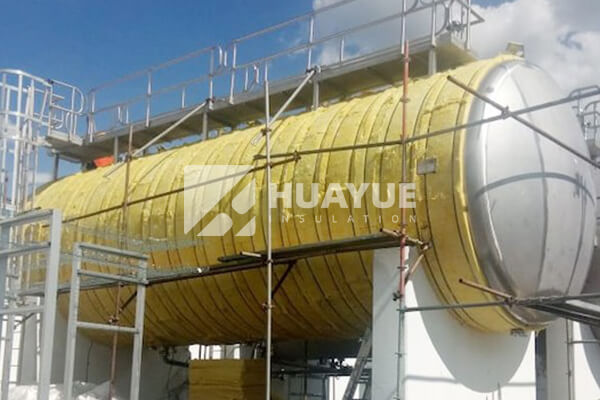
In my own business, I’ve supplied teams for everything from residential attic retrofits to enormous chemical plant projects. One chief engineer I worked with once told me, “Glass wool is our default for any temperature-sensitive job—because it works, and keeps on working if installed right.” It’s commonly installed as:
- Rolls or batts in walls, ceilings, and attics
- Loose fill for hard-to-reach places
- Blanket or rigid board for ducts, pipes, or tanks
- Sprayed material for custom shapes or soundproofing layers
Below is a simple overview:
| Application Type | Key Benefit | Typical Setting |
|---|---|---|
| Wall insulation | Save energy, block sound | Homes, offices, schools |
| Roof/floor insulation | Stable temperature | Houses, apartments, factories |
| Pipe/tank insulation | Minimize heat/cold loss | Industrial plants, HVAC systems |
| Soundproofing | Reduce noise transmission | Studios, machinery rooms, theaters |
As long as glass wool is kept dry, its performance stays dependable for years—a fact proven by countless projects I have been part of worldwide.
How Does Glass Wool’s Thermal Conductivity Help Energy Efficiency?
The reason glass wool excels as an insulator is its very low thermal conductivity. This feature is what makes it such an energy saver.
Glass wool has a thermal conductivity between 0.023 and 0.040 W/m·K. This low number means it resists the flow of heat better than most building materials, keeping interiors cooler in summer and warmer in winter.
On every major project, clients ask about lowering energy bills and meeting tough efficiency codes. Here’s why glass wool answers both needs. The secret comes from how it holds air. Gases like air conduct heat poorly, so by sealing them inside tiny pockets, glass wool stops heat from moving easily. Scientists call this “thermal resistance.” The more resistance, the less heat escapes.
- The fibers and air pockets break up heat’s path.
- No large convection currents can form within the wool.
- This slows down heat loss or heat gain through a wall, ceiling, or tank.
| Material | Typical Thermal Conductivity (W/m·K) | Insulation Strength |
|---|---|---|
| Glass wool | 0.023–0.040 | Very High |
| Concrete | 1.7–2.0 | Low |
| Wood | 0.13–0.17 | Medium |
| Metal (Steel) | 45–60 | Very Low |
Some product lines, like formaldehyde-free or aluminum-foil-coated glass wool, are made to be safer or handle special heat loads, but all depend on this same base fact: air trapped in glass wool is one of nature’s best heat blockers.
What Are the Most Common Glass Wool Product Types and How Are They Customized?
Today, glass wool comes in many forms. Picking the right type for your project means better results, lower costs, and easier installation.
Common glass wool products include air conditioning duct insulation, aluminum foil-coated batts, high-temperature slabs, and sound-absorbing boards. Specs can be tailored for safer, greener, or specialized industrial use.

I’ve watched the glass wool product range evolve rapidly in recent years. At HUAYUE, we focus not just on basic building batts but also on clean-room safe, formaldehyde-free, aluminum-faced, and tough industrial lines. For instance, we make insulation with higher density for compressed spaces, or special water-repellent versions for tricky locations.
Key product options:
| Product Type | Key Feature | Use Case |
|---|---|---|
| Standard glass wool rolls | Basic thermal insulation | Home, commercial building interior |
| Aluminum foil-faced wool | Blocks vapor, reflects heat | HVAC duct, metal roofing |
| Formaldehyde-free batts | Healthier air, eco-friendly | Green building, hospitals |
| High-temp resistant slabs | Withstands up to 450°C | Factory, industrial boilers |
| Custom cut/sprayed wool | Fits complex shapes | Machinery, odd-shaped containers |
Every specification, from thickness to width to additives, can be adjusted. I often assist engineers in picking the best glass wool for their exact environment—sometimes the best results come from small tweaks rather than a standard product.
Conclusion
Glass wool stays a top-performing, versatile insulation thanks to its low thermal conductivity and adaptable forms. Knowing its applications and choosing the right type give the best long-term results for any insulation job.
You may also be interested in:
Ready to Get Started?
Get in touch with our experts for personalized solutions tailored to your needs.
Get Free QuoteLatest Articles
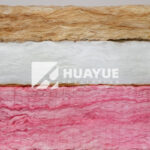
Eco Batt Insulation: What You Need to Know?
Dec 12, 2025
Let's Work Together
Ready to take your business to the next level? Get in touch with our team of experts and let's discuss how we can help you achieve your goals.
Get Free Solutions
